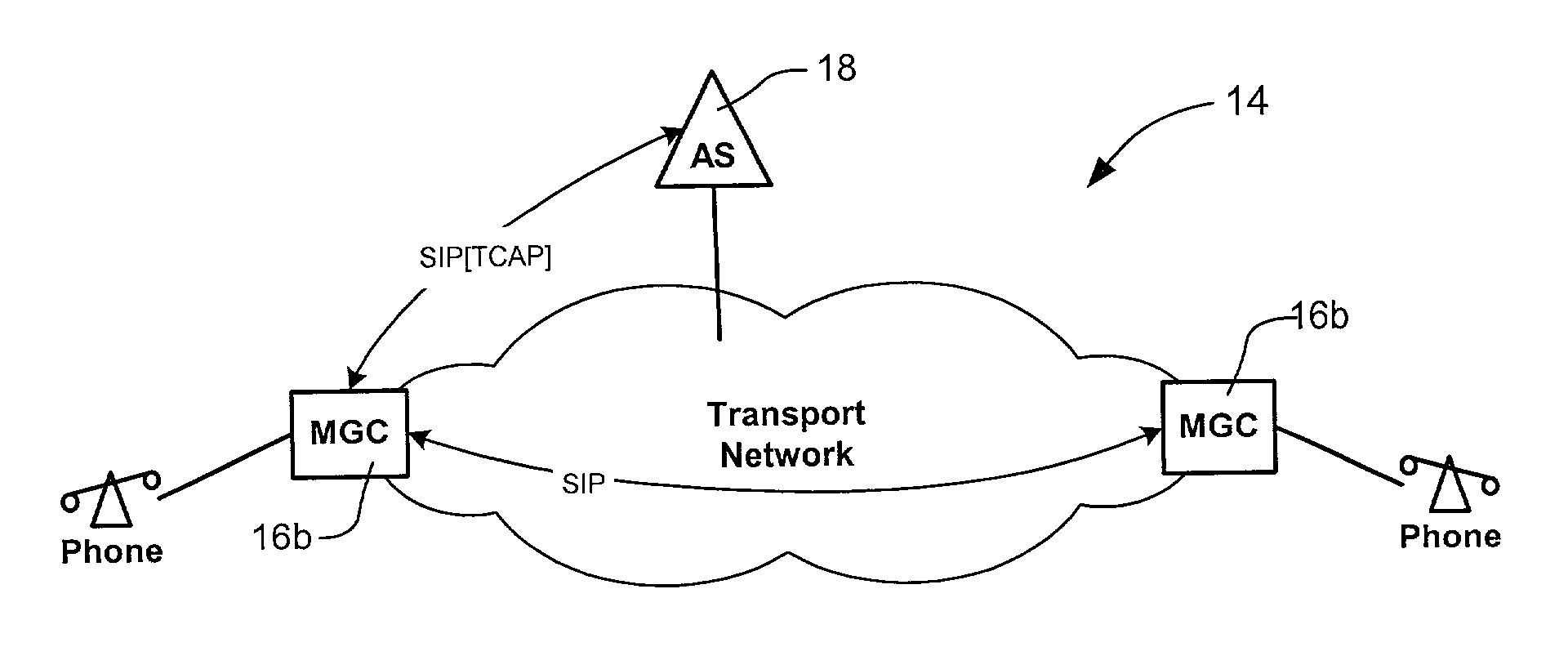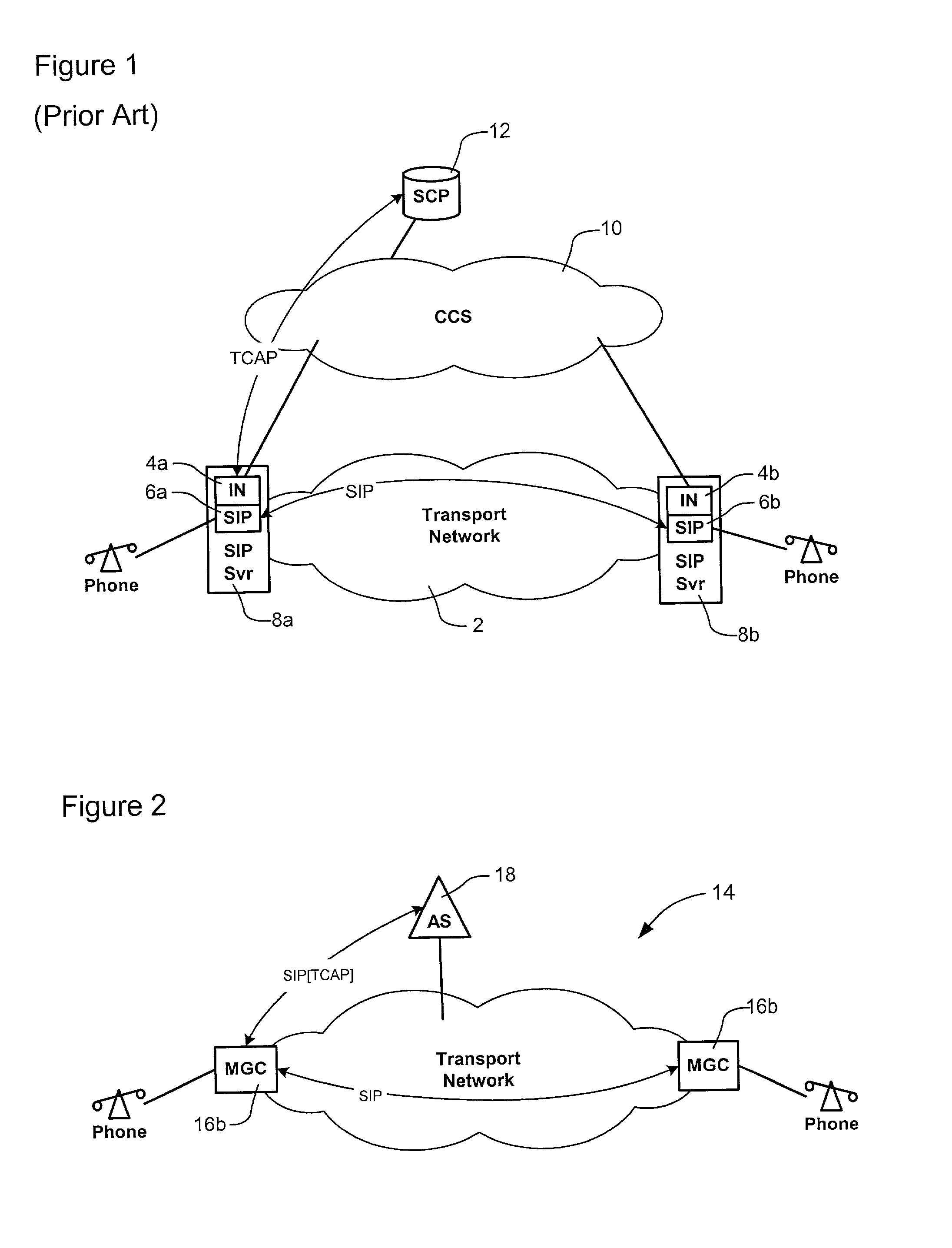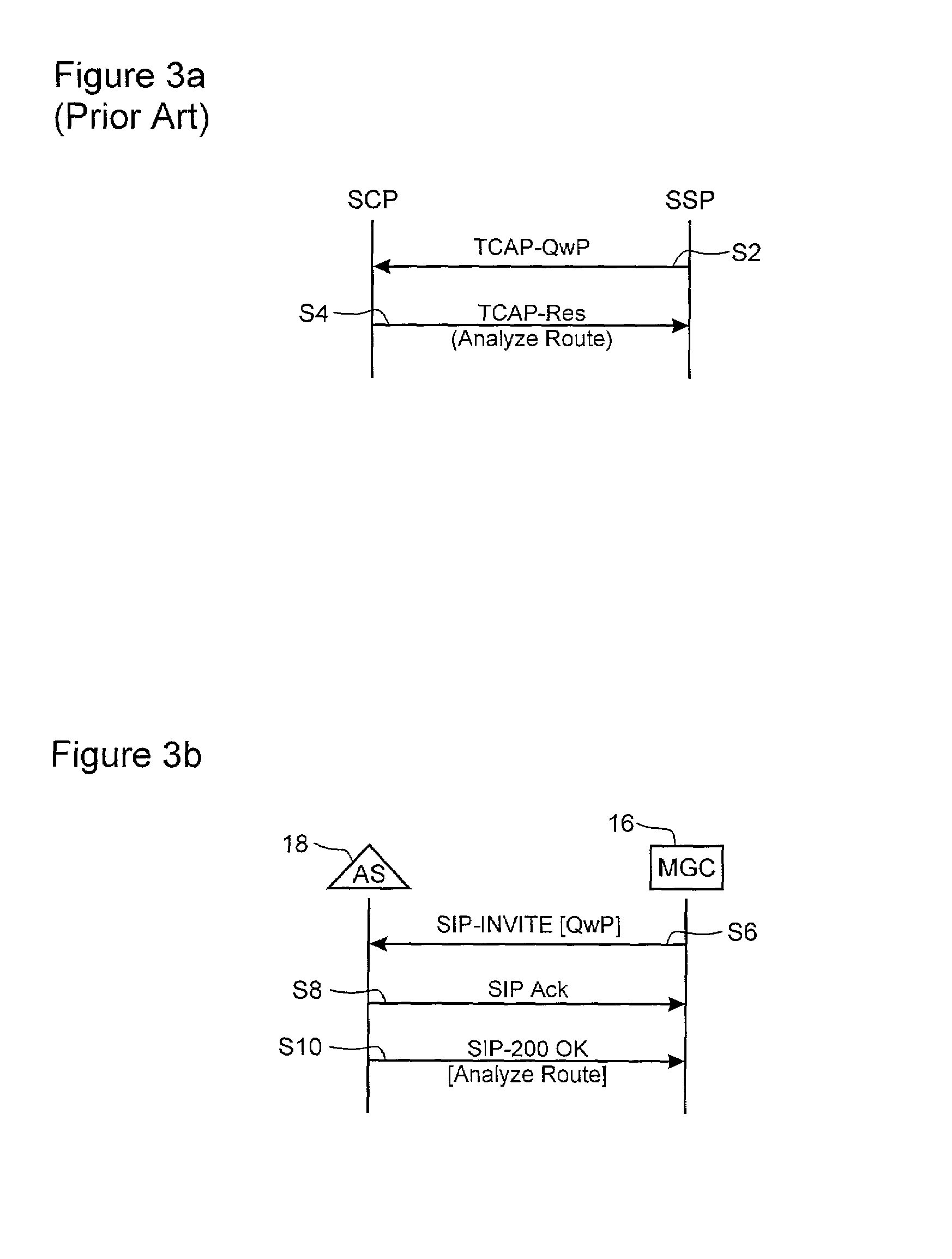Session initiation protocol based advanced intelligent network/intelligent network messaging
a network messaging and intelligent network technology, applied in the field of intelligent network/advanced intelligent network (in/ain) services, can solve the problems of network scalability, monolithic architecture and slow signaling speed, network service providers have increased difficulty in provisioning sufficient ccs network resources to handle the associated isup, and need to provid
- Summary
- Abstract
- Description
- Claims
- Application Information
AI Technical Summary
Benefits of technology
Problems solved by technology
Method used
Image
Examples
Embodiment Construction
[0032]The present invention provides a method and apparatus for enabling Intelligent Network / Advanced Intelligent Network (IN / AIN) functionality for telephony services deployed in a broadband packet network. FIG. 2 is a block diagram illustrating exemplary elements of a network 14 in which the present invention may be deployed.
[0033]As shown in FIG. 2, telephony services can be deployed within a broadband packet network 14 in a generally conventional manner. The broadband packet network 14 can be formed of one or more federated packet networks (e.g. Internet Protocol (IP), asynchronous transfer mode (ATM), frame relay (FR) and Integrated Services Digital network (ISDN)) with appropriate format adaptation at network boundaries. Communications sessions can be set up across the broadband packet network 14, e.g. between media gateway controllers (MGCs) 16a,16b using any known session control protocol, such as, for example, Session Initiation Protocol (SIP), which may encapsulate legacy ...
PUM
 Login to view more
Login to view more Abstract
Description
Claims
Application Information
 Login to view more
Login to view more - R&D Engineer
- R&D Manager
- IP Professional
- Industry Leading Data Capabilities
- Powerful AI technology
- Patent DNA Extraction
Browse by: Latest US Patents, China's latest patents, Technical Efficacy Thesaurus, Application Domain, Technology Topic.
© 2024 PatSnap. All rights reserved.Legal|Privacy policy|Modern Slavery Act Transparency Statement|Sitemap



